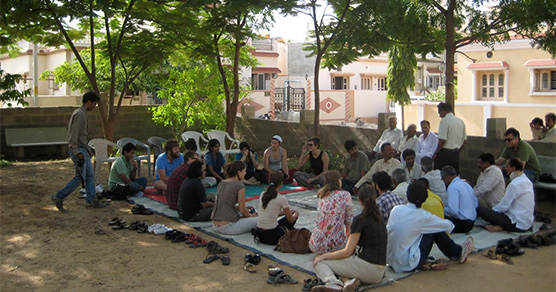The glorification of charitable architecture: A problem of ethics
De la part de Gonzalo Lizzaralde, professeur à l’École d’architecture de l’Université de Montréal, directeur du groupe de recherche if-grif et auteur du livre “The Invisible Houses: Rethinking and Designing Low-Cost Housing in Developing Countries”:
“An influential blogger makes a strong criticism of the role of architects in solving the problems of vulnerable communities abroad. He is just partially right.
In a recent article in “Portavoz”, Eduardo Cadaval, a professor at Barcelona’s School of Architecture (ETSAB) and architect at Cadaval & Solà-Morales, condemns what he calls the “glorification of charitable architecture”. Cadaval argues that an increasing number of young architects have irresponsibly followed a new tendency to join or lead humanitarian and charitable causes in developing countries – commonly replicating paternalistic tactics. While doing so, he argues, these so called “socially-responsible architects” and new humanitarian star-architects (he bizarrely points to Indian architect Anupama Kundoo, but my mind thinks of the “Architects for Humanity” types) have created more false expectations than effective results. For Cadaval, their young followers become “deceitful saviours” trying to escape harsh working conditions in their own – developed – countries. They rarely find, he continues, promising careers in their arrogant world-saving adventures.
It is easy to understand Cadaval’s frustration with architects trying to reach fame and recognition by acting “heroic” in slums and poor regions. But it is unfair to claim that most young architects trying to enlarge the boundaries of their practice while acting for causes they believe in are just pursuing glory or acting as charitable missionary opportunists.
I often encounter young architects and students who genuinely believe that architecture can play an important role in solving environmental and social problems beyond their countries’ boundaries. For them, political borders and professional jurisdictions do not correspond to the limits of practice and influence that they potentially see in a globalizing planet. They recognize that several current problems, such as environmental degradation, displacement, poverty, disaster risks, pollution and climate change transcend political borders. Albeit many of them seek an adventure (who doesn’t when being under 30 years old?), they also believe that many aspects of the architecture practice need to be reconsidered to better respond to the needs and expectations of contemporary societies. They are in a constant, valuable search for better ways to deploy their skills to improve living conditions for the most vulnerable. It is unfortunately true that many of them will be trapped in the intricate web of international aid, becoming simultaneously victims and executors of a mighty “Band-Aid” industry tainted by geopolitical and ideological interests. But I am confident that the majority of them expand their own toolkits and, eventually, will also transform the way we see and practice architecture. While it is true that many of them superficially engage in increasingly hollow and meaningless paradigms (and related buzz-terms) such as “sustainable development”, “resilience” and “community participation”, I believe that many more are constantly questioning in a more profound manner the ethical boundaries of our profession.
Unethical practices must be denounced whether they occur in the for-profit construction industry or the humanitarian business. Accountability is necessary in both. Whereas the glorification of architects has existed for centuries, efforts to condemn arrogance and its perverse effects are worth of recognition. However, arguing that all pursuits for new forms of practice fit into charity and that they are just opportunistic getaways from difficult local job markets is a simplistic, blunt argument. A short visit to any low-income settlement in a developing country demonstrates that more and better architects (not less of them) are required in the fields of housing, infrastructure, and services for the poor, vulnerable and marginalized. This challenge requires, nonetheless, architects that can do more than good designs and construction documents. It requires a set of skills (managerial, organizational, interpersonal) that might not lead to heroic interventions but that sometimes requires reinventing architecture practices.
Gonzalo Lizarralde
Professor of architecture”
See Cadaval’s original text in Spanish…
Read a comment in French published in the Courrier de l’architecte…
